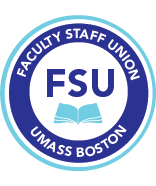The Point: Triage Pedagogy
2/22/2021
Greetings, Colleagues!
We are coming up on our one-year anniversary of remote instruction and part of me wants to just make this weekly blast very short, simply to ask: you ok? Have you figured out your tech issues? Is your connectivity stable and robust? How about work-life challenges? Are those of you with children or others in your care finding the support you need to manage your workload while also tending to their mental and physical health? Is there any thing the FSU can do to help you confront and mitigate the extreme challenges of the moment?
But given that anniversaries are often a good opportunity to take stock, reaffirm core commitments, and reevaluate priorities, I also thought I would offer up a few thoughts on what a year’s worth of remote teaching means for all of us. Among other things I want us to think together about what the possibilities and perils of sustained remote (and hybrid) teaching will mean for all of us in terms of workload. (Part of my not-so-hidden-agenda here is to urge you to participate in the FSU forum on workload issues that will be held this coming Friday at 2 p.m.) I don’t mean, to borrow a key term from journalism, to bury the lede: I have real concerns about the headlong rush to normalize what has been foisted on all of us in this COVID-era of triage pedagogy. I am already noticing an emerging genre of specialized and mainstream writing on this subject getting published under titles like “I Actually Like Teaching On Zoom.”
I’m sure many of you have been reading these pieces too and I have no doubt you have noticed the “through the looking-glass” aspect of so many: how they assume a level of endless time, space, and resources that so few who teach (on the K-12 or college level) actually experience. Here’s a recent example from a colleague at University of Texas Austin. Starting with a bracing and much appreciated provocation (“for students who sit in the back rows of an auditorium, every large face-to-face lecture class is a distance ed course”) Professor Steven Mintz presents an online learning scenario that seems like….nice work if you can get it but not very much like what most people I know could possibly mount. I throw no shade at Professor Mintz but am trying to reverse engineer his course as described to figure out how many years it would take me, how many supporting actors, how much trial and error, before I could roll out the geomapping, the full set of social interaction tools, the FAQ for the course, the simulations, and so on, that are main features. The workload implications are staggering.
The potential equity issues are also daunting. Professor Wendy Matsumura and two colleagues from University of California, San Diego wrote last June about how the move to remote and hybrid models of teaching will likely “exacerbate existing social, structural and racial inequalities. Research shows that students from underserved communities perform markedly worse in online vs. in-person classes, experience higher failure rates because they lack mentorship, support and opportunities for collaboration and research, and may rack up more student debt.” The conclusions here are chilling: “online learning disproportionately benefits learners who are Western, white, educated and male.” Given the social justice orientation of our new chancellor and provost, I have some confidence that UMB will not be engaging in any kind of “rush to remote” when we do have the option of returning to F2F teaching and learning. But it is important for all of us who teach here to stay current on the research and remain ready to argue for what is best here on the Point for the amazing diversity of students we teach. A commenter on the I-like-zoom-teaching article I link to above urges us not to be “the proverbial frog in heating water”: “we are so immersed in digital self-enclosure that we are inured to our diminishment.” We must, as this writer puts it, resist “rigid conformity to zoom’s organizing format” which, as we all know, shrinks “our perceptual, spatial, and social experience.”
There is plenty more to worry about in the normalization of remote that I don’t have to space to treat properly here but want to at least namecheck: the ways remote teaching open up the potential to “offshore” some of our crucial functions including evaluating student work; the ways that remote teaching augur a two-tiered college system which will allow the already privileged to send their children off for the “full” college experience, while the mass of learners will be warehoused in what Professor Matsumara et al. refer to as “online modules equivalent to a paid subscription to an educational channel”; the ways that remote teaching raise very knotty questions for instructors about intellectual property and course ownership. And then there is perhaps the knottiest question of all for us MTA members--how our higher ed “rush to remote” appears ultimately as a strange correlative to the campaign, described as a “moral panic” by Professor Keeanga-Yamahtta Taylor, to push K-12 teachers back into the classroom before it is safe to do so.
Over the past couple of years, the Executive Committee of the FSU has worked to move beyond a narrow focus on our own (admittedly complex and important) campus issues to a more expansive approach: bargaining for the common good. The COVID crisis has made that approach seem more urgent than ever.
This is your union: please write fsu@umb.edu with your ideas about remote teaching, equity, and how to continuing honoring our university’s urban mission in the pandemic era.
Sincerely,
Jeffrey Melnick
American Studies Department
Communications Director, Faculty Staff Union Executive Committee
For information on the FSU, links to our contract and bargaining updates, and a calendar of events, see the FSU webpage
